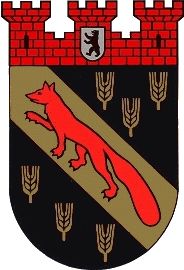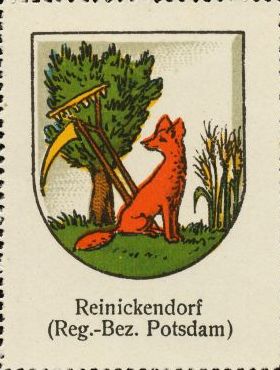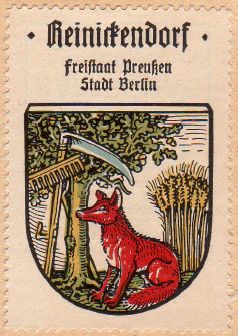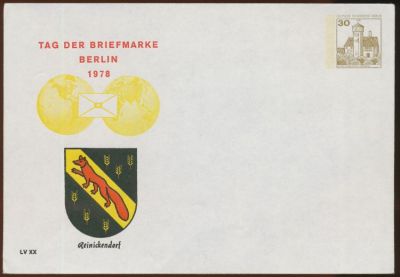Reinickendorf: Difference between revisions
Jump to navigation
Jump to search
Knorrepoes (talk | contribs) m (Text replacement - "{{de}}" to "") |
Knorrepoes (talk | contribs) m (Text replacement - "{| class="wikitable"↵|+Official blazon↵|-↵|'''German'''↵| ↵|-↵|'''English''' ↵| {{blazon wanted}}↵|}" to "{| class="wikitable" |+Official blazon |- |'''German''' | blazon wanted |- |'''English''' | blazon wanted |}") |
||
| Line 12: | Line 12: | ||
|- | |- | ||
|'''German''' | |'''German''' | ||
| | | blazon wanted | ||
|- | |- | ||
|'''English''' | |'''English''' | ||
| | | blazon wanted | ||
|} | |} | ||
Revision as of 08:35, 6 April 2023
REINICKENDORF
State : Berlin
Incorporated into : 1920 Berlin
| German | blazon wanted |
| English | blazon wanted |
Origin/meaning
The arms were granted on November 28, 1955.
The arms are based on the old village seal, which showed a landscape with a canting fox (Rein is the name of a fox in some legends), some trees and a field of wheat. This seal was also used until 1955 as arms (above left). In the new arms the bunch of wheat was replaced by six wheat-ears. The six wheat-ears symbolise the six former villages.
As with all arms of the Berlin districts, a mural crown with a small shield with the arms of Berlin could be used.
| The arms in the Wappen-Sammlung (+/- 1910) |
The arms by Hupp in the Kaffee Hag albums +/- 1925 |
| The arms on a cover (1978) |
Literature: Stadler, 1964-1971, 8 volumes.
Template:De1
Template:Media1 Vogel, 1987



